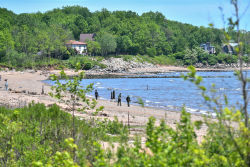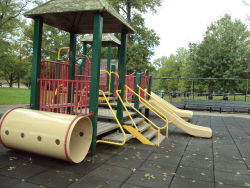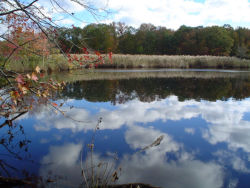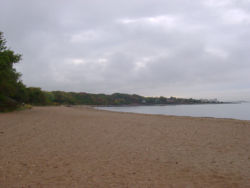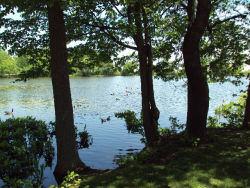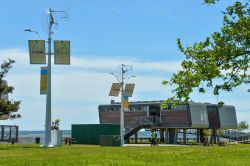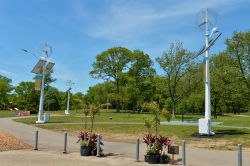Wolfe's Pond Park
Wolfe's Pond Park Ravine
The stream that connects Wolfe’s Pond to Acme Pond carved this ravine into the sandy soil. The trees that grow here are the oldest in the park and were spared from being cut down because the land was too steep to farm. The land on either side of the ravine is more leveled and it was cleared for farming or pastures until about 1900. Joel Wolfe owned one of the larger farms. When he sold his farm in 1857, the pond retained his name, as it does to this day.
In the springtime, runoff is plentiful, making the water level in the ravine quite high. As a result, only flood resistant plant species can grow here. These include red maples (Acer rubrum), sweet gum (Liquidambar styraciflua), and tulip trees (Liriodendron tulipifera). In the shadier but more upland areas of the ravine, hayscented fern (Dennstaedtia punctilobula) and arrowwood (Viburnum dentatum,) grow beneath White (Quercus alba) and Red (Quercus rubra) oaks. These oaks are packed closely together and therefore grow straight up toward the sun, with little horizontal branch growth. These trees’ parents and grandparents live upslope from here, on the open meadows. As such, they were more able to spread out than the trees in the ravine. The steepest parts of the ravine provide a moist, cool area for American beeches (Fagus grandifolia) to thrive. These trees are easily recognizable because of their smooth, light gray trunks. The bird life in the ravine is just as impressive as in the rest of the park. Wood thrushes (Hylocichla mustelina), red-eyed vireos (Vireo olivaceus), blue jays (Cyanocitta cristata), and black-capped chickadees (Poecile atricapillus) are often present. During the spring migration period cedar waxwings (Bombycilla cedrorum) and scarlet tanagers (Piranga olivacea) appear.Check out your park's Vital Signs
Clean & Safe
Green & Resilient
Empowered & Engaged Users
Share your feedback or learn more about how this park is part of a
Vital Park System

